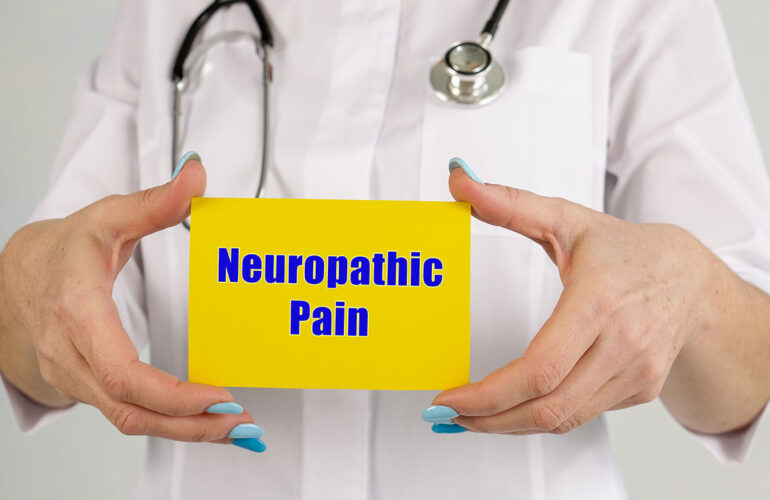Neuropathic pain, also known as nerve pain or neuralgia, affects over 20 million Americans and can range in severity from mild to chronic. It may be caused by a chronic and progressive nerve disease, the result of an injury or infection or in general, when a health problem impacts the nerves that carry sensation to areas of the brain. Treatments range from exercise to over-the-counter pain medicines as well as prescription drugs like gabapentin, all of which may or may not help. Australian researchers using animal studies report that CBD may also be of benefit to people experiencing this type of pain.
Neuropathic Pain
Neuropathic pain is a chronic form of pain that develops from lesions or damage within the nervous system which includes peripheral nerves, spinal cord and the brain. It can be caused by conditions including shingles, diabetes, HIV/AIDS stroke, Parkinson’s disease, multiple sclerosis and alcohol use disorder and will require some form of treatment including physical therapy, prescription medications, psychotherapy and if symptoms are severe enough, surgery. Damaged nerve fibers send inaccurate signals to pain centers in the body which result in neuropathic pain.
Symptoms
Depending upon the type of nerve affected, symptoms will vary and individuals may experience numbness or pain described as sharp, jabbing, throbbing, burning, prickling or tingling. Other symptoms can include extreme sensitivity to touch, muscle weakness, lack of coordination, and the inability to move.
Current Pharmaceutical Treatments
Depending upon the severity of symptoms and negative impact on quality of life, there are several treatment options including:
- Over-the-counter (OTC) pain relievers
- Antidepressants
- Anti Seizure medications
- Topical treatments
- Physical therapy
- Psychological therapy
- Nerve blocks
- Surgery
Steroids are sometimes used to treat symptoms of nerve pain as are immunosuppressants, injections of immunoglobulin. At times, it may be difficult to treat the underlying cause of pain and in some cases, individuals may experience negative side effects.
Research Findings on CBD and Neuropathic Pain
In general, the effects of CBD on inflammation, pain and other symptoms begins with the endocannabinoid system, which “is a lipid signaling system composed of endogenous cannabinoids, target proteins such as cannabinoid receptors and the enzymes involved in their production and degradation” (1). Two of the most common endocannabinoids are anandamide and 2-AG which are found throughout the body and brain and are responsible for regulating pain, anxiety, memory and mood. In one study, an oromucosal CBD spray was shown to produce greater relief of pain when compared to a placebo. To the contrary, another study did not find significant relief for individuals with peripheral neuropathic pain. While in yet another study, topical CBD reduced focal pain associated with peripheral neuropathy.
Nabiximols (Sativex)
Numerous clinical studies have reported that Nabiximols (trad name Sativex), which is an oral spray used to treat neuropathic pain, overactive bladder, spasticity and symptoms of multiple sclerosis, has been shown to reduce intensity of pain caused by peripheral neuropathy and multiple sclerosis. Some researchers stated that this medication, which is a 1:1 ratio of THC and CBD, actually provides superior pain relief with few side effects (2).
Final Thoughts on CBD and Neuropathic Pain
Neuropathic pain can range from mild to debilitating and affects a large portion of the United States population and many more around the world. Many times, it is difficult to treat and although there are a number of pharmaceutical options, many medications are known for their side effects. A natural option may be CBD or in some cases, CBD with THC if the pain is severe enough to warrant its use. While some studies find good results, others do not. The verdict is not completely in on whether CBD can be a safe and effective alternative or add-on treatment for various types of pain, including neuropathic pain. More research and time should tell.
Sources
- Lu, H.C. & Mackie, K. Review of the Endocannabinoid System. Biological Psychiatry: Cognitive Neuroscience and Neuroimaging. 6:607-615. 2021.
- Uberall, M.A. Comparison of the Effectiveness and Tolerability of Nabiximols (THC:CBD) Oromucosal Spray Versus Oral Dranabinol (THC) as Add-On Treatment for Severe Neuropathic Pain in Real-World Clinical Practice: Retrospective Analysis of the German Pain e-Registry. Journal of Pain Research, 15:267-286. 2022.

